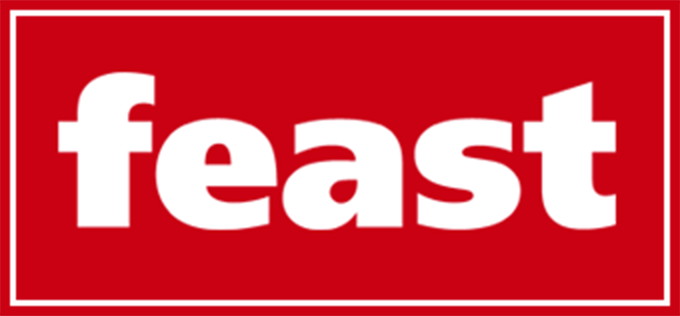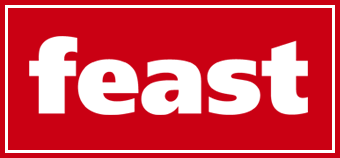In today’s evolving business landscape, organizations are investing more than ever in workplace transformation—global spending on smart workplace technology is expected to exceed $75 billion by 2030. Yet despite this shift, confusion still lingers around two critical disciplines: workplace management and facilities management.
While often used interchangeably, these functions serve distinct roles in shaping how people experience and interact with their work environment. This is especially true in the context of IT workplace management, where digital infrastructure and employee experience must work hand-in-hand to support a flexible, tech-enabled workforce.
As companies adapt to the future of work, understanding these differences isn’t just a matter of semantics—it’s a strategic necessity. Clear delineation allows organizations to align resources, design better employee experiences, and operate with agility in a hybrid-first world.
This article breaks down the unique focus of each discipline, explores where they intersect, and outlines how leaders can leverage both to build more connected, high-performing workplaces.
What is Facilities Management?
Facilities management refers to the coordination of physical assets, infrastructure, and services to ensure a building operates smoothly. It is primarily operations-focused, covering responsibilities such as maintaining HVAC systems, ensuring safety compliance, managing cleaning and security contracts, and overseeing utilities and maintenance schedules. The goal is to keep the physical environment safe, efficient, and functional.
For example, a facilities manager ensures that the air conditioning works properly, fire alarms are tested regularly, and office repairs are handled quickly. These tasks, while often behind the scenes, are essential for keeping day-to-day operations uninterrupted.
What is Workplace Management?
Workplace management, on the other hand, is centered around the employee experience. It focuses on how space, technology, and culture come together to support productivity, collaboration, and well-being. While facilities management keeps the lights on, workplace management asks how those lights can better support hybrid schedules, employee satisfaction, and performance.
This includes decisions like configuring meeting spaces for hybrid collaboration, managing hot-desking tools, or optimizing floor plans based on usage data. It’s a strategic function that aligns physical and digital environments with broader organizational goals.
Understanding the difference between these roles is critical: one maintains the foundation, the other shapes how people thrive within it.
Key Differences in Focus and Scope
When comparing facilities operations to workplace strategy, the contrast lies in both mindset and mission. One focuses on running the building, the other on shaping how people work within it. Understanding this distinction is key for organizations aiming to align physical space with evolving employee needs.
Operational vs. Strategic
Facilities management is inherently operational. It revolves around maintaining systems, minimizing disruptions, and managing vendor relationships. Success is often measured by uptime, compliance, and cost-efficiency.
Workplace management is strategic. It deals with how space, culture, and technology come together to empower employees. Here, success is tied to engagement, productivity, and how well the workplace adapts to shifting work patterns—such as hybrid models or activity-based settings.
Infrastructure vs. People
At a high level, facilities teams support the infrastructure, ensuring everything works as expected—from lighting and temperature to security and sanitation. Their focus is the physical environment.
In contrast, workplace teams focus on people—how they use space, collaborate, and feel at work. Whether it’s implementing digital wayfinding systems or redesigning floor plans for better collaboration, their work centers on the human experience.
Where They Overlap—and Why It Matters
While workplace management and facilities management serve distinct purposes, their goals often intersect. When coordinated effectively, they drive outcomes greater than the sum of their parts—enhancing productivity, safety, and efficiency across the board.
Shared Goals: Productivity, Safety, Efficiency
Both disciplines care about creating environments that support work. Facilities teams may focus on ensuring HVAC systems operate reliably, while workplace teams assess how temperature or lighting affects employee focus. Safety is another shared concern—whether it’s managing building access or implementing ergonomic setups for hybrid workers.
The synergy becomes most apparent in space planning. For example, decisions about floor layout, occupancy levels, or meeting room configurations benefit from both technical insight (facilities) and behavioral understanding (workplace).
The Case for Collaboration
A compelling example of this integration came during a recent office redesign project. The facilities team handled core infrastructure updates—electrical upgrades, air circulation, and compliance checks. Meanwhile, the workplace team led user research, evaluating how different departments collaborated and what employees needed in a post-pandemic setup.
By co-planning the redesign, they avoided redundant investments and created a layout that supported both individual focus and team engagement. This kind of collaboration prevents siloed decision-making and ensures every square foot of space is working smarter—not harder.
As hybrid work reshapes office needs, the line between facilities and workplace teams is increasingly blurred. Bridging the gap isn’t just good practice—it’s a strategic advantage.
Evolving Roles in the Age of Hybrid Work
The shift to hybrid workplace models has redefined what both facilities and workplace managers are responsible for. Traditional boundaries have blurred, and adaptability has become a core competency in both roles.
How Hybrid Work Reshaped the Mandate
According to a 2023 JLL report, 74% of companies have either adopted or are planning for hybrid work strategies. As a result, office spaces are no longer static environments—they’re dynamic assets that must respond to fluctuating occupancy and evolving employee needs.
Facilities teams, once focused mainly on uptime and maintenance, are now tasked with enabling flexibility through infrastructure. Meanwhile, workplace managers are leading initiatives that center on employee experience, from creating engaging spaces to supporting well-being and collaboration—even across distributed teams.
This evolution has introduced new planning considerations: how often teams come in, what types of spaces they use, and how to maximize resource utilization without compromising comfort or performance.
The Rise of Digital Tools and Employee-Centric Design
The modern hybrid environment is powered by a growing ecosystem of digital workplace tools. From desk booking systems and smart occupancy sensors to workplace analytics platforms, these tools help teams track usage patterns and make data-driven decisions.
More importantly, employee expectations have shifted. People now expect their workplace—physical or virtual—to support autonomy, purpose, and choice. Leadership is recognizing this, pushing both workplace and facilities professionals to adopt more employee-centric strategies.
Ultimately, both roles are converging around a shared priority: enabling seamless, frictionless work experiences that balance business efficiency with human needs.
Strategic Implications for Leaders and Organizations
As workplace environments grow more complex, leadership must shift from reactive management to strategic alignment. Clear distinctions between roles—and collaboration across them—are no longer a nice-to-have, but a competitive advantage.
Aligning Teams Around Outcomes
Too often, workplace and facilities teams operate on parallel tracks. The result? Duplicated efforts, missed opportunities, and blurred accountability. One of the most effective steps leaders can take is to align teams around shared business outcomes—whether it’s improving employee satisfaction, reducing space waste, or accelerating digital transformation.
Clarifying roles and expectations across departments fosters transparency and streamlines execution. A helpful approach is co-creating a cross-functional workplace roadmap, where IT, HR, workplace, and facilities teams contribute to a unified vision.
Frameworks like experience-first planning—which prioritize human needs while supporting operational goals—can also guide decision-making in a more cohesive direction.
Making Smarter Investment Decisions
In today’s data-rich environment, leaders must be discerning about where to invest—whether in smart building systems, hybrid scheduling tools, or redesigned collaboration zones. By anchoring decisions in integrated workplace governance, organizations can avoid piecemeal solutions and ensure every investment ladders up to a broader strategy.
Ultimately, the goal is not just better space management—it’s stronger engagement, resilience, and agility. When leadership makes clarity a habit, teams become more empowered, workplaces more responsive, and outcomes more measurable.
Conclusion: Making the Right Investment in Workplace Success
The future of work demands more than functional spaces—it calls for intentional, people-centered workplace strategy. Organizations that recognize the distinction between facilities management and workplace management, and align them under a shared vision, will be best positioned to adapt and lead.
By embracing integrated management, leaders can unlock smarter use of resources, better employee experiences, and a more agile response to evolving business needs. Whether you’re navigating hybrid schedules, planning space utilization, or deploying new technology, success starts with clarity.
Now is the time to assess how your teams are structured, where gaps exist, and how alignment can elevate your strategy. A well-orchestrated approach isn’t just operational—it’s transformational.



